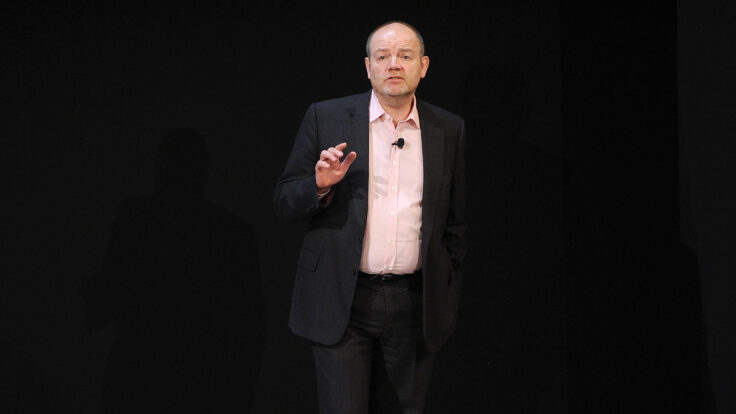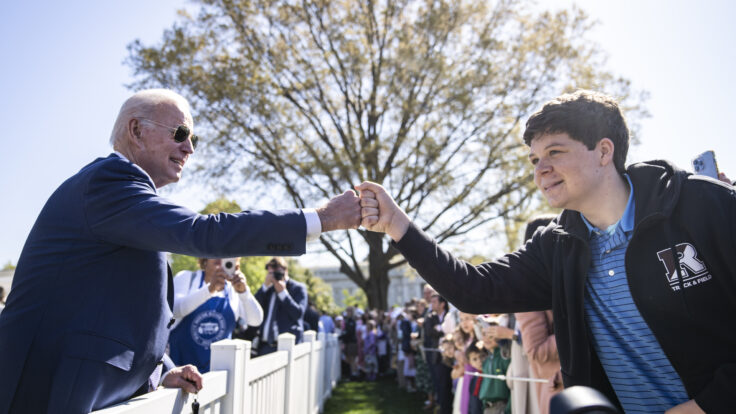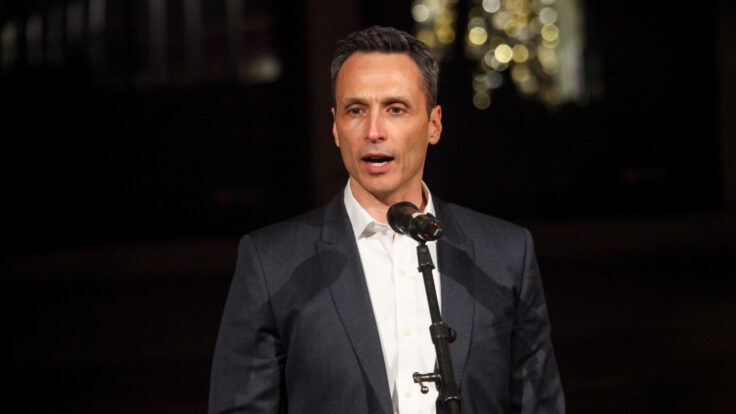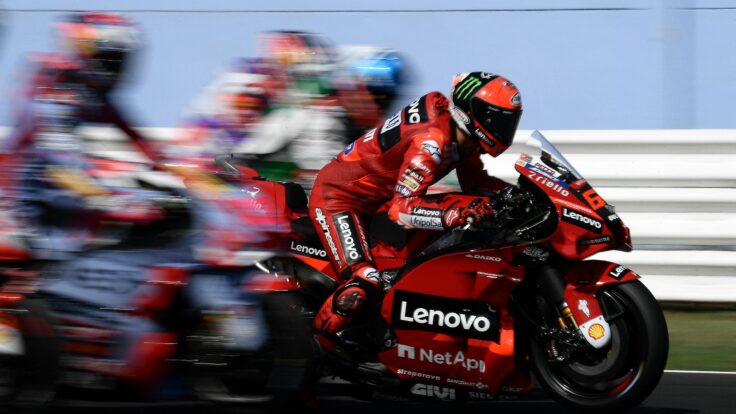 |

|
|
Welcome back to The Best & The Brightest. I’m Peter Hamby.
Tonight, some observations about the campaign ad wars in North Carolina, where I inadvertently became a targeted persuadable voter and subject to a blizzard of negative ads from Donald Trump and his allies. The race to define Kamala Harris is as heated as ever, but our latest poll with Echelon Insights suggests voters might not care about her policy positions very much at all.
But first…
🎧 More Nuzzigate & Netflix’s Tectonic Shift: This morning, ahead of tomorrow night’s V.P. debate, my boss Jon Kelly swung by The Powers That Be to bat around a few hypotheses regarding the potential impact of the Walz–Vance showdown, before diving into the latest details of the Nuzzigate scandal. If you missed the episode, you can stream it right here.
And now, here’s Abby Livingston on one of the election’s biggest X factors…
|
|
A MESSAGE FROM INSTAGRAM
|
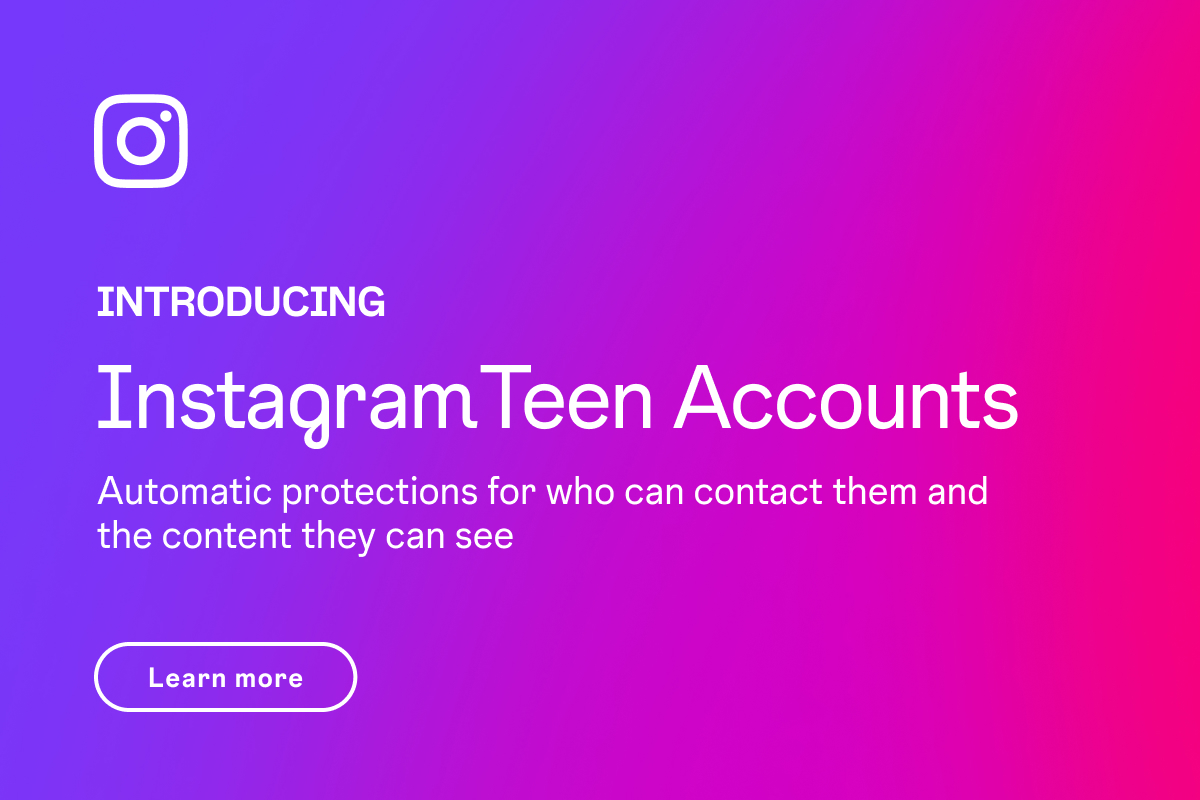
|
|
Introducing Instagram Teen Accounts with automatic protections for teens.
Instagram is launching Teen Accounts, with built-in protections limiting who can contact teens and the content they can see. Plus, only parents can approve safety setting changes for teens under 16.
This means parents can have more peace of mind when it comes to protecting their teens.
Learn More
|
|
|
|
|
If you find yourself at a cocktail party in town this week, be prepared to listen to multiple, deeply earnest conversations about how the Democrat and Republican ground games are matching up with five weeks to go until Election Day. Indeed, one of the reasons strategists have been so wary of making predictions about November is because nobody seems to know how Trump’s ’24 ground game will perform. Since reconquering the R.N.C. earlier this year, the former president has outsourced much of the party’s G.O.T.V. to outside groups. Meanwhile, the Dems are as coordinated, this fall, as they’ve ever been. The central question over the next month is which model will prove most effective…
- Fertilizing the farm team: It’s no secret, in Democratic circles, that Barack Obama left the non-presidential branches of the party to atrophy, and that one of Joe Biden’s political legacies will be his efforts to rebuild the overall party infrastructure. Last week, Biden’s D.N.C. chairman Jaime Harrison announced a $2.5 million investment, spread across every state party in the country, to support down-ballot races—which goes beyond the group’s standard presidential election-year remit of focusing on electing the president. Kamala Harris is similarly focused on electing down-ballot Democrats, shoveling $25 million from her campaign to various committees earlier this month.
- Trump’s risky play: Meanwhile, in a surprising departure from recent G.O.P. history, the Trump campaign has outsourced much of its field game, as Tara noted last week. It’s surprising because the Republican ground game has historically been a distinct point of party pride. Republicans still like to brag about George W. Bush’s 2004 campaign turnout operation. Similarly, former R.N.C. chairman Reince Priebus made his get-out-the-vote operation a cornerstone of his tenure. Nevertheless, Trump’s campaign team insists they’re confident in their ground game, according to Politico. Although it seems especially treacherous for the Trump campaign to be reinventing this particular wheel when Harris’s campaign manager is Jen O’Malley Dillon, who is widely considered to be the best field strategist of her generation.
|
| And now to the main event… |
 |
| Trump Microtargeting & Kamala Mysteries |
| During 72 hours in North Carolina, I became the target demo for a Republican ad blitz painting Kamala’s America as a dystopian, crime-ridden hellhole. Meanwhile, the latest Puck-Echelon poll shows Harris leading 49-44, even though voters still don’t know what she’s for. Does it matter? |
|
|
|
| I’m in North Carolina for a few days, enjoying the front end of a series of swing state reporting trips I’ll be making in the coming weeks. Which means that, while I gorged myself on football over the weekend, I had the misfortune of experiencing what life is like for a battleground state television viewer in an election year. And more specifically, what life is like for a very specific political target in these final five weeks of the campaign: a man in a swing state between the ages of 18 and 44 who watches a lot of live sports on YouTube TV. That would be me.
Earlier this month, MAGA Inc., one of the main super PACs supporting Donald Trump, announced a $100 million ad buy in all seven swing states, including right here in North Carolina, with a focus on “persuadable streaming voters”—a cohort, in their view, of couch-sitting men watching college football, the NFL, and the Major League Baseball playoff push. That’s exactly what I was doing the last two days, taking in the bonkers Alabama-Georgia game and a bunch of Sunday NFL matchups, with some channel-flipping in between to check up on local news coverage of Hurricane Helene’s devastation up in the mountains. I’ve spent a lot of time in my career in key states during the final stretch of an election, but never have I been hit with such an onslaught of campaign ads during commercial breaks—almost all of which were slashing takedowns of Kamala Harris.
One representative ad from the MAGA Inc. campaign darkly described Harris as a soft-on-crime liberal who “let criminals go free” and “always puts criminals first.” I saw it multiple times. Don’t make America her next victim, it warned. When I picked up my phone and glanced at Twitter, I saw digital ads from Right for America, the other big Trump super PAC dumping money into the battlegrounds, blasting Harris for “skyrocketing prices” and being “pro-crime.” I also saw, on three separate occasions, what a lot of national football viewers did during commercial breaks this weekend—the Trump campaign ad going after Harris for supporting trans rights. (“Kamala is for they/them. President Trump is for you.”)
What struck me about the campaign ads wasn’t the tone. It was the volume—and the precision of the targeting. The Harris campaign and its allies are outspending Republicans across the board in every Electoral College battleground, but Republican groups are coming in late with big ad reservations in Pennsylvania, Georgia, and North Carolina, focused on turning out men to block Harris’s path to 270. Now, I’m obviously just a note-taking politics addict, not a resident, only passing through the Tar Heel State. I’m sure other targeted demos are seeing a different set of ads. But watching football, I could see how a voter in my peer group, a Brett in Charlotte or a Tucker in Winston-Salem, could be persuaded to move in Trump’s direction.
|
|
A MESSAGE FROM INSTAGRAM
|

|
|
Introducing Instagram Teen Accounts: a new experience for teens, guided by parents.
Instagram is launching Teen Accounts, with built-in protections limiting who can contact teens and the content they can see. Plus, only parents can approve safety setting changes for teens under 16.
So parents can have more peace of mind when it comes to protecting their teens.
Learn More
|
|
|
| Hell on Earth vs. A New Way Forward |
|
| In my narrow field of view as a targeted male “voter” watching football on a streaming platform, the ratio of Trump to Harris ads was probably 3:1, with every Trump ad going full scorched earth. The Harris ads that popped up, meanwhile, were all positive. No blunt-force attacks on Trump, just an implied contrast, with Harris calling for a “new way forward.” The Harris ads didn’t convey any real policy ideas, only the projection of feel-good, center-left values.
This soft-focus messaging jibes with what you hear from Harris strategists—that after all these years, exhausted voters know all they need to about Trump, but they need to hear more about Harris. “The more they hear from her, the more they like her,” is a common refrain from Democratic strategists and pundits. The goal is to promote her plans and policy ideas, yes, but also her biography, to reassure voters that Harris isn’t some sinister Berkeley pinko who wants to fund transgender operations for illegal aliens who are in prison (or should be). Watching Harris ads, it’s clear her straight-to-camera warmth is a message in itself.
The positivity push might end up being the right strategy. But I’ve also had more than a few conversations with Democrats anxious about the lack of tough Trump contrast messaging in Harris’s paid media efforts. My pal Tim Miller, The Bulwark’s unlikely YouTube star, texted me about the Harris ads on Saturday, “I’m sure they test well, but I really just don’t know who they are for.” I asked Miller, a die-hard Never Trumper, what he would prefer. “I don’t know, they could tell people something new about her,” he responded. “Or cut Trump’s nuts off.”
|
|
|
|
|
| What’s clear from my North Carolina ad bonanza is that “the race to define Kamala Harris”—a refrain echoed by so many of us reporters in the weeks following her ascent to the Democratic nomination—isn’t going to end until Election Day. Make no mistake: The horse race polls are positive for Harris. She’s winning by about three points in the national polling average, and she’s currently ahead in enough of the seven key battleground states to win the Electoral College. It’s still an absurdly tight race, but as Nate Silver told my colleague John Heilemann on his podcast last week, you’d rather be Harris than Trump right now.
But even as polls show Harris’s approval rating climbing to new highs, they also show that after four years as vice president, the triumphant spectacle of the Democratic National Convention, the gargantuan amount of Dem ad spending, and a killer debate performance in Philadelphia, American voters still don’t know a lot about Harris. Puck’s latest poll in partnership with Echelon Insights tells the same story.
In the poll, which surveyed 1,005 likely voters from September 23-25, Harris holds a 49-44 percent lead over Trump in a multicandidate field, one of her largest national leads of the campaign. The poll also shows that momentum is a helluva drug in campaigns, with 46 percent of voters saying they expect Harris to win, compared to 40 percent for Trump—a reversal from earlier in the year when Joe Biden was the nominee and most voters thought he would lose. Harris also now leads Trump on almost every attribute question, including a narrow 48-47 lead on the defining topic, “Making our economy work better.” (Voters still give Trump a big edge on handling immigration and border security.)
But, in a curious paradox, even as Harris scores high marks on candidate qualities and how she would handle certain issues, voters continue to say they aren’t sure what positions she actually holds. For example, Echelon asked voters if Harris supports Medicare for All—legislation she co-sponsored as a senator, but backed away from once she became the Democratic nominee this summer. The electorate apparently never got the news. Almost 70 percent of voters said that Harris supports Medicare for All, and only 14 percent said she opposes it. On the question of banning fracking—another position on which Harris has changed her tune—34 percent of voters answered incorrectly that she supports a fracking ban, with 32 percent saying she opposes it, and 34 percent saying they weren’t sure. Asked whether voters think Harris’s position changes are “sincere” or not, 46 percent said Harris’s policy shifts were “definitely” or “probably” sincere, while 45 percent said they were not.
The Trump campaign has been having a field day with Harris’s flip-flops on past positions, including the liberal pronouncements she made when running for the Democratic nomination back in 2020. J.D. Vance is almost certain to bring these up in his debate tomorrow night with Tim Walz, and the moderators, Norah O’Donnell and Margaret Brennan of CBS News, probably will, too. But for Harris, that was then; she’s running on a different agenda now. She has outlined a series of new policy proposals since becoming the nominee, including in a speech last week to the Economic Club of Pittsburgh, during which she pitched herself as a proud “capitalist.” She also promised to give tax credits to U.S. manufacturers, boost investments in clean energy, and encourage innovation in artificial intelligence and blockchain technologies. In August, Harris announced plans to give a $25,000 tax credit to first-time homebuyers, build 3 million new housing units across the country, and ban price gouging by grocers and food producers.
Echelon tested how much voters know about those proposals by asking a simple, open-ended question: “Name one of Kamala Harris’s specific policy proposals. If you do not know of any, just say so.” The most common answer? “Don’t Know.” That was the response of 37 percent of voters. The most common response after that was “abortion rights,” volunteered by 21 percent of voters. Nine percent mentioned something about her homebuyer tax credit. No other policy topic registered above 3 percent of responses.
The counterpoint: Echelon found that voters don’t know much about Trump’s plans either, beyond deporting immigrants and building a wall along the U.S.-Mexico border, something he obviously failed to do in his term as president. Maybe that lack of knowledge presents an opportunity for Harris to cut some new TV ads reminding voters of what, precisely, Trump stands for. Seizing on the details of what’s inside Project 2025, for instance, rather than just repeating the term over and over and hoping that people Google it.
Whatever shapes the discourse takes over the next five weeks, the good news for Harris in all this new data is that she’s winning the race anyway, whether people care about policy details or not. Vibes and values may just win the day, the way they won early news cycles for Harris when she replaced Biden. But as I learned watching the Alabama-Georgia game over the weekend, nothing is guaranteed until the final seconds of the fourth quarter.
|
|
|
|
| FOUR STORIES WE’RE TALKING ABOUT |
 |
| Hoda’s Pay Cut |
| Inside Hoda Kotb’s departure from NBC’s ‘Today’ show. |
| DYLAN BYERS |
|
 |
|
 |
|
 |
| Final Days of FTX |
| Digging into the latest gruesome FTX financial autopsy. |
| WILLIAM D. COHAN |
|
|
|

|
 |
|
|
|
Need help? Review our FAQs
page or contact
us for assistance. For brand partnerships, email ads@puck.news.
|
|
You received this email because you signed up to receive emails from Puck, or as part of your Puck account associated with . To stop receiving this newsletter and/or manage all your email preferences, click here.
|
|
Puck is published by Heat Media LLC. 227 W 17th St New York, NY 10011.
|
|
|
|












